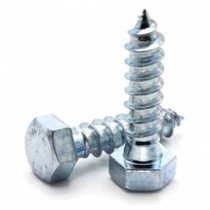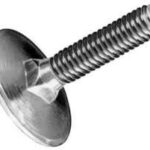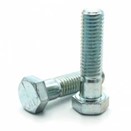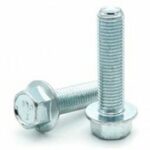Lag bolts, also known as lag screws, are heavy-duty fasteners used to connect heavy lumber or other materials. They have a similar design to traditional screws but are much larger and stronger. Here are some key characteristics and uses of lag bolts:
- Material and Strength: Lag bolts are typically made of steel and can be coated with materials like zinc or galvanized to resist corrosion. They are designed to provide substantial holding power and resist shear forces.
- Threaded Design: Lag bolts have coarse, deep threads that help them grip into wood or other materials securely. The threads make it easier for the bolt to cut into the material as it’s screwed in.
- Head Types: Lag bolts usually have hexagonal heads, requiring a wrench or socket for installation. This design provides a strong connection and prevents slippage during installation.
- Length and Size: Lag bolts come in various lengths and sizes to accommodate different applications. The length of the bolt is essential, ensuring it penetrates through the material and into the underlying structure for a secure connection.
- Common Uses:
- Wood Construction: Lag bolts are commonly used in woodworking projects, such as attaching beams, joists, or framing members.
- Structural Applications: They are suitable for connecting heavy structural elements, like attaching ledger boards to walls in deck construction.
- Outdoor Projects: Lag bolts with corrosion-resistant coatings are often used in outdoor applications where exposure to weather is a concern.
- Installation: Installing lag bolts typically requires pre-drilling a hole in the material to prevent splitting and facilitate easier insertion. The bolts are then screwed in using a wrench or socket.
It’s important to choose the right size and length of lag bolt for your specific application, considering the weight and load requirements. Additionally, proper installation techniques are crucial to ensure a strong and secure connection.





